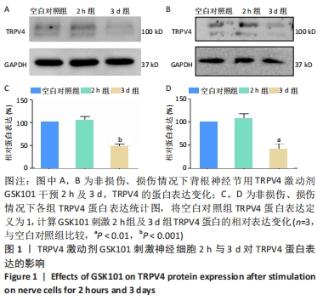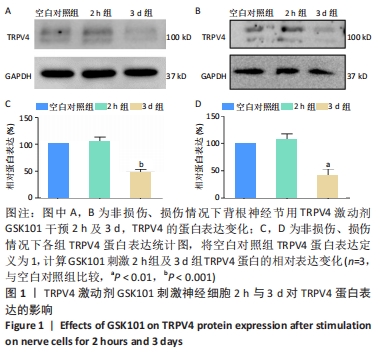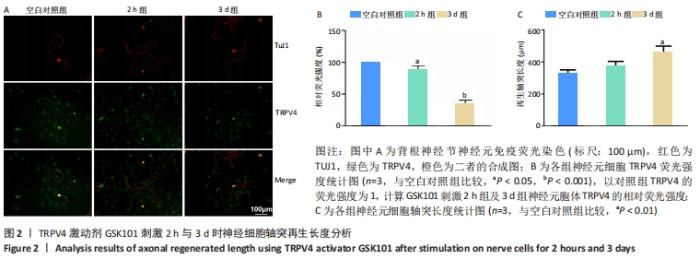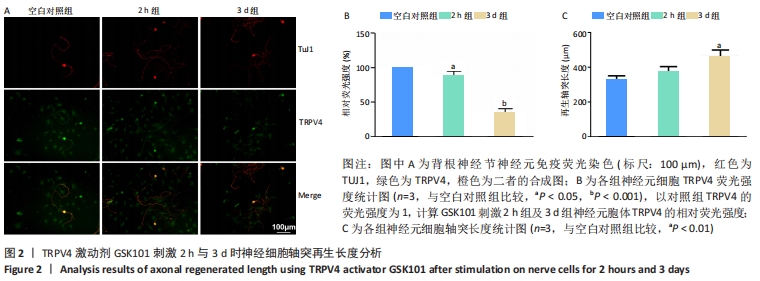[1] WHITE JP, CIBELLI M, URBAN L, et al. TRPV4:Molecular Conductor of a Diverse Orchestra. Physiol Rev. 2016;96(3):911-973.
[2] DARBY WG, GRACE MS, BARATCHI S, et al. Modulation of TRPV4 by diverse mechanisms. Int J Biochem Cell Biol. 2016;78:217-228.
[3] DERUYVER Y, WEYNE E, DEWULF K, et al.Intravesical Activation of the Cation Channel TRPV4 Improves Bladder Function in a Rat Model for Detrusor Underactivity. Eur Urol. 2018;74(3):336-345.
[4] DARBY WG, POTOCNIK S, RAMACHANDRAN R, et al. Shear stress sensitizes TRPV4 in endothelium-dependent vasodilatation. Pharmacol Res. 2018;133:152-159.
[5] SONKUSARE SK, BONEV AD, LEDOUX J, et al. Elementary Ca2+signals through endothelial TRPV4 channels regulate vascular function.Science. 2012;336(6081):597-601.
[6] KANJU P, LIEDTKE W. Pleiotropic function of TRPV4 ion channels in the central nervous system. Exp Physiol. 2016;101(12):1472-1476.
[7] ALEXANDER R, KERBY A, AUBDOOL AA, et al. 4α-phorbol 12,13-didecanoate activates cultured mouse dorsal root ganglia neurons independently of TRPV4. Br J Pharmacol. 2013;168(3):761-772.
[8] LAWHORN BG, BRNARDIC EJ, BEHM DJ. Recent advances in TRPV4 agonists and antagonists. Bioorg Med Chem Lett. 2020;30(8):127022.
[9] BARATCHI S, KEOV P, DARBY WG, et al. The TRPV4 Agonist GSK1016790A Regulates the Membrane Expression of TRPV4 Channels.Front Pharmacol. 2019;10:6.
[10] SAIJILAFU, HUR EM, LIU CM, et al. PI3K-GSK3 signalling regulates mammalian axon regeneration by inducing the expression of Smad1.Nat Commun. 2013;4:2690.
[11] JIN M, WU Z, CHEN L, et al. Determinants of TRPV4 activity following selective activation by small molecule agonist GSK1016790A. PLoS One. 2011;6(2):e16713.
[12] MA JJ, XU RJ, QI SB, et al. Regulation of adult mammalian intrinsic axonal regeneration by NF-κB/STAT3 signaling cascade. J Cell Physiol. 2019;234(12):22517-22528.
[13] ZHOU FQ, WALZER MA, SNIDER WD. Turning on the machine:genetic control of axon regeneration by c-Jun. Neuron. 2004;43(1):1-2.
[14] PARK KK, LIU K, HU Y, et al. Promoting axon regeneration in the adult CNS by modulation of the PTEN/mTOR pathway. Science. 2008;322(5903):963-966.
[15] GEY M, WANNER R, SCHILLING C, et al. Atf3 mutant mice show reduced axon regeneration and impaired regeneration-associated gene induction after peripheral nerve injury. Open Biol. 2016;6(8):160091.
[16] JIE P, HONG Z, TIAN Y, et al. Activation of transient receptor potential vanilloid 4 induces apoptosis in hippocampus through downregulating PI3K/Akt and upregulating p38 MAPK signaling pathways. Cell Death Dis. 2015;6(6):e1775.
[17] DU G, LI L, ZHANG X, et al. Roles of TRPV4 and piezo channels in stretch-evoked Ca2+response in chondrocytes. Exp Biol Med(Maywood). 2020;245(3):180-189.
[18] HEATHCOTE HR, LEE MD, ZHANG X, et al. Endothelial TRPV4 channels modulate vascular tone by Ca2+-induced Ca2+release at inositol 1,4,5-trisphosphate receptors. Br J Pharmacol. 2019;176(17):3297-3317.
[19] FEETHAM CH, NUNN N, LEWIS R, et al. TRPV4 and K(Ca)ion channels functionally couple as osmosensors in the paraventricular nucleus. Br J Pharmacol. 2015;172(7):1753-1768.
[20] EARLEY S, PAUYO T, DRAPP R, et al. TRPV4-dependent dilation of peripheral resistance arteries influences arterial pressure. Am J Physiol Heart Circ Physiol. 2009; 297(3):H1096-1102.
[21] SULLIVAN MN, FRANCIS M, PITTS NL, et al. Optical recording reveals novel properties of GSK1016790A-induced vanilloid transient receptor potential channel TRPV4 activity in primary human endothelial cells.Mol Pharmacol. 2012;82(3):464-472.
[22] LIU K, LU Y, LEE JK, et al. PTEN deletion enhances the regenerative ability of adult corticospinal neurons. Nat Neurosci. 2010;13(9):1075-1081.
[23] BEI F, LEE HHC, LIU X, et al. Restoration of Visual Function by Enhancing Conduction in Regenerated Axons. Cell. 2016;164(1-2):219-232.
[24] PÓPULO H, LOPES JM, SOARES P. The mTOR signalling pathway in human cancer. Int J Mol Sci. 2012;13(2):1886-1918.
[25] OHASHI K, DEYASHIKI A, MIYAKE T, et al. TRPV4 is functionally expressed in oligodendrocyte precursor cells and increases their proliferation. Pflugers Arch. 2018; 470(5):705-716.
[26] CHEN Y, BALASUBRAMANIYAN V, PENG J, et al. Isolation and culture of rat and mouse oligodendrocyte precursor cells. Nat Protoc. 2007;2(5):1044-1051.
|









